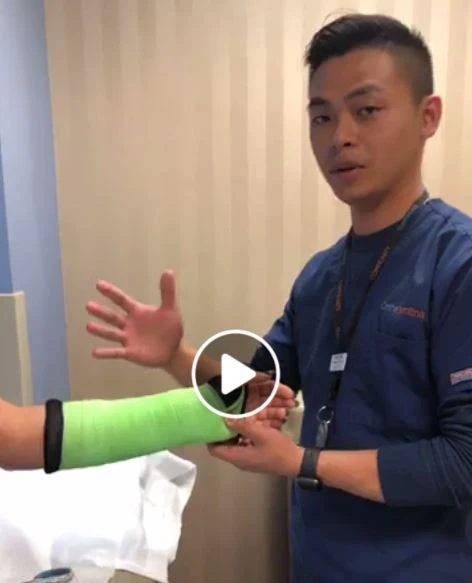By Thinh Tran, Certified Medical Assistant
After a break, fracture, sprain or dislocation, a cast allows bones to stay in place as they heal.
Being injured is never fun, but there are a few fun facts about casts beyond the fact that all your friends can sign them.
Certified Medical Assistant Thinh Tran is a master of cast application and removal at OrthoCarolina’s Pediatric Orthopedic Center. Here are four things about casts you may not know from Thinh:
1. Cast removal can tickle
Having a cast removed is always a reason to smile because it means your bones have healed. What you may not know is that beyond that smile you may actually end up giggling.
Many patients report that having a cast removed tickles or makes their skin feel fuzzy or numb. Why does a saw make you laugh? The blade is oscillating and by moving back and forth quickly it can cut right through the hard cast but never injure your skin. That fast movement causes micro vibrations that result in the funny tickle feeling.

2. There’s a chemical reaction happening right before your eyes
What do your cast and a boat have in common? They’re both made of fiberglass. The tiny strands of glass are dipped in resin and exposure to water causes a chemical reaction making the fiberglass harden to a state that’s even stronger than cement or steel. That means the compound that’s protecting your bones is both strong and lightweight.
3. The cast removal saw doubles as a vacuum
The oscillating saw blade that zips through fiberglass but is gentle on your skin also has a vacuum attachment. As the technician makes two cuts with the saw to remove the cast, the vacuum sucks up the resulting dust along the way.
4. Splints are half-casts
Many folks wonder about casts versus splints but it’s more like casts and splints. Because a splint is hard on just one side it’s often referred to as a “half cast.” This allows the splint to keep your bones in place while accounting for any swelling that may happen as you heal. That means casts and splints can actually work together with the splint being using until swelling has subsided, then a cast to keep everything snug as healing happens.
Back




Leave a Comment